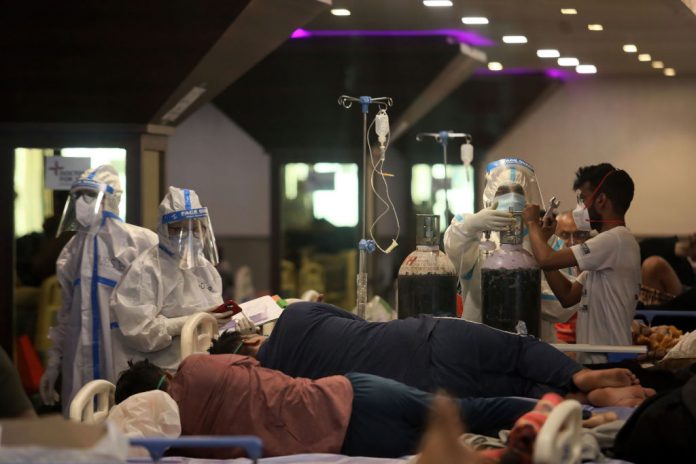
Here’s the thing about a virus that rises and falls exponentially: the middle path is perilously narrow. Make the right call and you’ll be skiing down a steep sunny slope, your friends in the bar below cheering every turn. But step the other way and you’ll tumble down an icy escarpment of granite shards and boulders just as fast.
The assessment published by Sage on Friday as regards the Indian variant will have come as cold comfort to the Prime Minister, hence his evident caution at the podium in Downing Street after reading it. It told him he was standing atop a precipice but not which way he should turn. The data he really needs remains obscured by a thick and disorienting fog.
Mr Johnson’s position is made all the more difficult by the politics and psychology of it all. Huge progress has been made battling back the virus over recent months, so there is all the more to lose. On the other hand, there’s the vaccine, our avalanche airbag – not to mention the country’s now awesome testing capacity and its ability to track and trace.
“Just go for it, old boy – we’re well protected”, is the shout from the shuttered businesses, lockdown weary parents, the unemployed and assorted thrill-seekers in the valley below.
So what does the data that are available tell us? How worried should we really be about the Indian variant interrupting our path back to something resembling normality?
A few things are clear. The variant is here and it sits in three broad areas of the country – London, the Midlands and the North West. Total numbers have more than doubled in each of the past two weeks but it is climbing from a very low base, with just 1,313 cases so far detected in total.
In a small number of inner city districts there are both rising incidence rates and a high proportion of cases, suggesting community spread. “This is most pronounced in London and the North West”, says Public Health England.
Three key characteristics of the variant will ultimately determine the threat it poses: the speed at which it transmits; its ability to evade the immunity given by prior infection or vaccination; and the severity of the illness it causes.
It has been classed a “variant of concern” because it ticks the first box – scientists are now all but certain it has some transmission advantage. There is also some laboratory evidence to suggest it may dilute immunity but not catastrophically so. Full vaccination (two doses) will provide protection against severe disease if the experience of healthcare workers in India is anything to go by, say experts. Finally, on the variant’s virulence – its lethality compared to existing stains – there is no evidence so far to cause concern.






